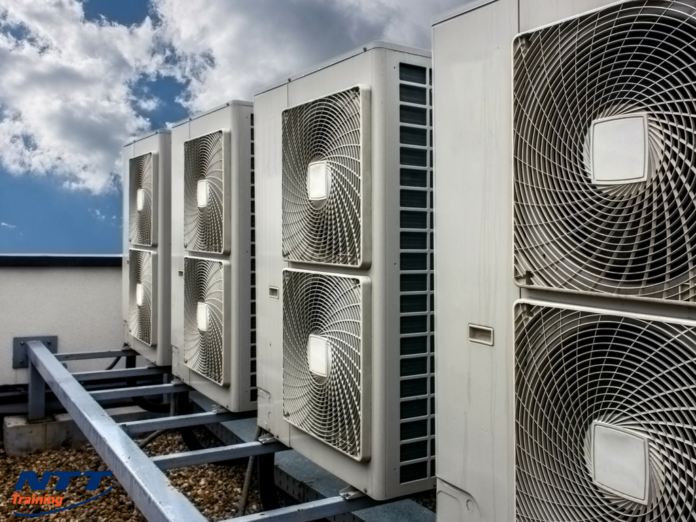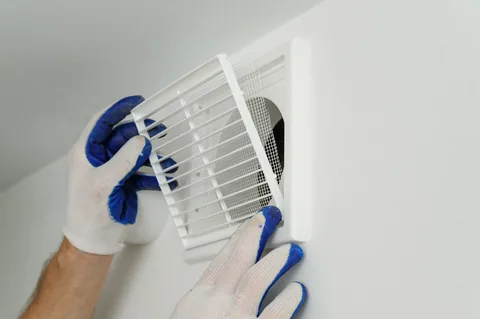House ventilationmay not be the most glamorous or well-known technology, but they play a vital role in our daily lives. These systems transfer heat from one medium to another, making them essential for many industries and even our homes. While their importance may often go unnoticed, the benefits of heat-exchange systems are truly surprising. From increasing energy efficiency to reducing environmental impact, these systems offer significant advantages worth exploring. In this blog post, we will dive into the world of heat-exchange systems and uncover how they can benefit us. So, let’s look at these unsung heroes and discover their remarkable capabilities.
Enhancing Energy Efficiency of heat exchange system in Industrial Processes
Heat exchange systemare pivotal in optimizing energy use in industrial settings. Their ability to transfer heat from one medium to another enables significant reductions in energy consumption, thereby slashing operational expenses. In manufacturing, these systems are adept at harnessing waste heat and channeling it back into various processes.
This energy recycling not only conserves valuable resources but also contributes to a greener operational model. Heat-exchange systems’ versatility allows them to be integrated into a multitude of industrial processes, from cooling machinery to preheating raw materials. This strategic application ensures that every joule of energy is utilized to its maximum potential, showcasing the system’s role as a cornerstone of modern, efficient manufacturing practices.
Improving Comfort in Residential Spaces with passive house ventilation system
Passive house ventilation systemplays an integral role in enhancing the comfort of residential spaces and elevating the quality of life for occupants. An efficient house-ventilation system, particularly one incorporating a heat-exchange mechanism, is crucial for maintaining a constant, comfortable indoor temperature regardless of external weather conditions.
These systems effectively manage humidity levels by ensuring the continual renewal of indoor air, preventing the accumulation of dampness and the resultant discomfort. Furthermore, house-ventilation systems contribute to a healthier indoor environment by filtering out pollutants and external allergens. Residents benefit from cleaner air, which is especially important for individuals with respiratory conditions or allergies.
The seamless operation of these systems also means that comfort is achieved quietly, without the disruptive noise associated with traditional heating and cooling methods. Through the strategic integration of heat-exchange technology, house-ventilation improves thermal comfort and enhances air quality, making homes more pleasant and inviting.
Reducing Environmental Impact with Passive House-ventilation System
Passive house-ventilation systems embody the essence of environmental stewardship by significantly diminishing the ecological footprint of buildings. These systems utilize a meticulously designed heat-exchange mechanism to maintain optimal indoor air quality and temperature, all while minimizing energy use. Key benefits include:
Lower Greenhouse Gas Emissions
By efficiently recycling heat within the building, passive-house-ventilation systems drastically reduce the need for traditional heating and cooling methods that rely heavily on fossil fuels, substantially decreasing greenhouse gas emissions.
Enhanced Air Quality
The continuous exchange of indoor and outdoor air ensures pollutants, allergens, and moisture are systematically removed from the indoor environment. This benefits the planet by reducing the energy needed to condition fresh air and protects occupant health by preventing the accumulation of harmful substances.
Reduced Energy Consumption
The core of a passive-house-ventilation system is its ability to retain heat during cooler months and repel heat during warmer months, significantly reducing the energy required to maintain comfortable indoor temperatures. This decrease in energy consumption directly translates to a lower environmental impact.
Promotion of Sustainable Building Practices
Incorporating passive house principles encourages the adoption of additional eco-friendly building techniques and materials, further amplifying the positive environmental effects of such systems.
By prioritizing the use of passive house-ventilation systems, we can make strides towards more sustainable living environments that benefit the occupants and contribute to the well-being of our planet.
Passive house heat exchanger requires Low Maintenance.
One of the compelling advantages of implementing a passive house heat exchanger is its low maintenance requirements. Unlike traditional heating and cooling systems, which often demand regular and sometimes complex servicing, passive heat exchangers are designed for durability and longevity. The simplicity of their design, focusing on the efficient transfer of heat without moving parts in the heat exchange process, minimizes the potential for wear and tear.
This design philosophy significantly reduces the frequency and cost of maintenance. Homeowners and building managers will find that these systems require only occasional cleaning and inspection to ensure optimal Performance. This not only saves time and resources but also enhances the overall reliability of the home’s heating and cooling infrastructure.
With fewer maintenance demands, occupants can enjoy the continuous benefits of improved air quality and thermal comfort without worrying about unexpected system failures or costly repairs. This ease of upkeep is another reason why passive-heat exchangers are an attractive solution for those seeking to reduce their environmental impact while maintaining high standards of living comfort.
Enhancing Safety with heat exchange system for home
Incorporating a heat exchange systemfor home use introduces a layer of Safety that is often overlooked in traditional heating and cooling methods. These systems significantly reduce the risk of fires and carbon monoxide poisoning by eliminating the need for combustion-based heating within the home environment.
Since heat-exchange systems operate by transferring heat without direct fire or fuel burning, the potential hazards associated with gas leaks, sparks, and open flames are virtually eradicated. This is particularly crucial in residential settings, where Safety is paramount. Additionally, reducing indoor pollutants and providing a constant supply of fresh, filtered air further safeguard the health of occupants by preventing the build-up of harmful substances.
Through the strategic use of a heat-exchange for the home, families can enjoy enhanced comfort and efficiency without compromising on Safety, making it a responsible choice for health-conscious and safety-oriented homeowners. In addition to safety benefits, the system’s efficiency also has environmental implications, lowering the household’s carbon footprint. Hence, heat-exchange systems promote indoor Safety and foster responsible, sustainable living.
Boosting Performance with house heat exchanger
A house heat exchanger is critical in maximizing the Performance of heating, ventilation, and air conditioning (HVAC) systems. By effectively transferring heat between air streams, these systems can recover energy that would otherwise be lost, leading to improved HVAC efficiency. This efficiency boost not only means that homes can achieve the desired indoor temperature quicker but also do so with less energy consumption.
The result is a significant performance enhancement, where the HVAC system operates more effectively, maintaining comfortable indoor conditions with reduced energy input. Additionally, this improved Performance contributes to the longevity of HVAC equipment. By mitigating the strain on these systems, heat exchangers reduce the wear and tear on vital components, potentially extending the lifespan of the entire HVAC system.
This enhanced performance, energy savings, and reduced environmental impact highlight the importance of incorporating house exchangers in modern residential designs. Through their role in optimizing HVAC system efficiency, heat exchangers are not just about conserving energy; they’re also about elevating the operational capabilities of home heating and cooling solutions.
Reducing Noise Pollution with heat exchange ventilation
The unique design of heat exchange ventilation systems offers an additional, often overlooked benefit: significantly reducing noise pollution. Unlike conventional HVAC systems, which can generate considerable sound from compressors and fans operating at high speeds, heat-exchange ventilation operates with a quieter disposition. This is primarily due to its mechanism of transferring heat between air streams without the need for moving parts that produce mechanical noise.
In urban areas, where external noise pollution can penetrate indoor spaces, the ability of these systems to operate quietly while maintaining efficient air circulation and temperature regulation is invaluable. Occupants can enjoy a more peaceful indoor environment, free from the distraction and stress of constant background noise. Schools, hospitals, and residential areas, in particular, benefit from the reduced noise levels, which support concentration, healing, and overall well-being.
Furthermore, the diminished sound intrusion enhances privacy in settings where confidentiality is paramount, such as offices or meeting rooms. By integrating heat-exchange ventilation, buildings improve their energy performance and indoor air quality and contribute to a quieter, more serene indoor atmosphere, reflecting the system’s holistic approach to enhancing occupant comfort and environmental quality.
Facilitating the Use of Renewable Energy Sources
Heat-exchange systems are the linchpin in integrating renewable energy sources into our daily energy consumption, offering a pathway to a cleaner, more sustainable energy ecosystem. These systems are ingeniously designed to harness the thermal energy available from sources like the sun, wind, earth, and even water bodies, facilitating a smooth transition towards renewable energy utilization.
For instance, during colder months, a heat-exchange system can capture solar heat or tap into geothermal warmth to heat indoor spaces without traditional, energy-intensive heating methods. Conversely, in warmer climates, these systems can leverage cooler underground temperatures to aid in cooling, significantly reducing the need for electrically powered air conditioning.
This capacity to efficiently shift between heating and cooling, depending on the available renewable resources, underscores the system’s versatility and alignment with sustainable building practices. Moreover, by reducing the dependency on non-renewable energy sources, heat-exchange systems contribute to a notable decrease in buildings’ carbon footprints. They play a critical role in the broader adoption of green technologies, encouraging innovation in renewable energy harvesting, storage, and utilization.
Conclusion
The exploration of house ventilationhas unveiled a myriad of advantages that extend far beyond simple energy conservation. These systems embody a fusion of efficiency, comfort, environmental stewardship, and Safety, positioning them as a cornerstone of sustainable and responsible living and manufacturing. Their application across both industrial and residential domains underscores a universal appeal, driven by the promise of reduced operational costs, enhanced living conditions, and a marked decrease in ecological footprints. The strategic integration of heat-exchange technology into our daily lives and processes aligns with current environmental goals and sets the stage for the innovative use of renewable energy sources.
FAQs
Q: What is the basic principle behind the operation of house ventilation?
A: The fundamental principle of house ventilationis transferring thermal energy between two mediums without them coming into direct contact. This process effectively utilizes energy that would otherwise be wasted, optimizing efficiency in heating or cooling applications.
Q: Are the initial installation costs of heat-exchange systems justified?
A: While the upfront costs of installing heat-exchange systems can be higher than traditional HVAC systems, the long-term savings in energy costs and the reduction in maintenance expenses make them a financially sound choice. The efficiency gains and operational cost savings typically offset the initial investment over time.
Q: How adaptable are heat-exchange systems to different climates and environments?
A: Heat-exchange systems are highly adaptable and can be engineered to suit various climates and environmental conditions. These systems can be customised to provide optimal comfort and efficiency year-round, whether capturing warmth in cold climates or expelling heat in warmer ones.
Q: Can integrating heat-exchange systems into my home or business contribute to sustainability goals?
A: Absolutely. Heat-exchange systems play a vital role in achieving sustainability goals by significantly reducing energy consumption and leveraging renewable energy sources when possible. They help minimize carbon footprints and promote eco-friendly practices in residential and commercial settings.
Q: What maintenance do heat-exchange systems require to ensure they remain efficient?
A: Heat-exchange systems generally require minimal maintenance, such as routine cleaning and occasional inspections. Their design minimizes moving parts, reducing wear and tear and extending the system’s lifespan while ensuring it operates efficiently.
| Other Good Articles to Read |
| Niche Blogs Connect |
| Blogs 97 |
| Blog Stitution |
| Blogs Cotch Rouge |
| Blog Signatr |
| Blog Sintonias |
| Blog Zilla |
| Consumer Forums |
| Finance Forums |
| G Blogs |
| Too Blog |
| Related Business Listings |
| Contact Directory |
| Local Business Profiles |



